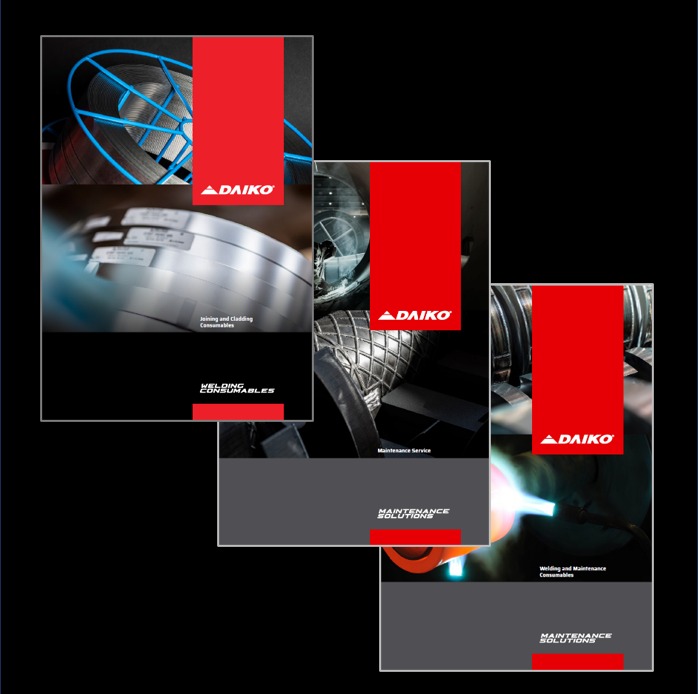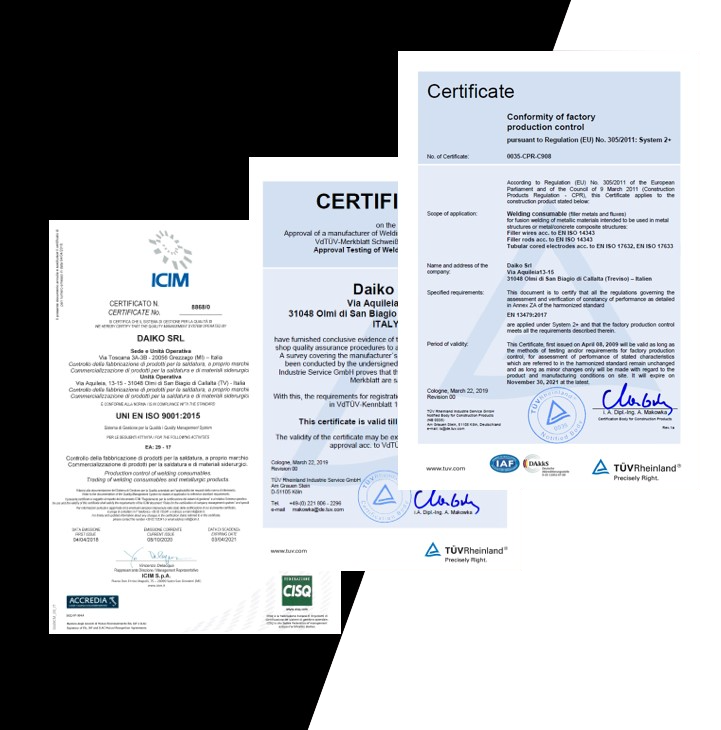- Home
- >
- All DAIKO products
- >
- CREEP RESISTING STEELS
- >
- 9CrMoV
9CrMoV
Application
These consumables have been specifically engineered for the welding of 'type 91' 9CrMo steels, which have been modified through the addition of small amounts of niobium, vanadium, and nitrogen to enhance their long-term creep properties. The primary purpose of these consumables is to cater to the requirements of high-integrity structural applications operating at elevated temperatures. The alloy enhancements responsible for augmenting creep strength have been meticulously calibrated to exceed the minimum thresholds necessary for ensuring optimal performance. In this particular scenario, weldments are susceptible to being weakest in the softened (intercritical) Heat-Affected Zone (HAZ) of the parent material. This vulnerability is evident in the occurrence of 'type IV' failures during transverse weld creep tests. Modified 9CrMo steels have gained widespread application in critical components such as headers, main steam piping, valves, and turbine casings within fossil-fueled power generation plants. Furthermore, there is potential for their future deployment in sectors such as oil refineries, as well as coal liquefaction and gasification plants.
Alloy Type
Modified 9CrMo for high temperature creep
resistance.
Microstructure
In the PWHT condition the microstructure consists
of tempered martensite with alloy carbides.
Materials
EN W.Nr.: 1.4903 (X10CrMoVNb 9 1).
ASTM: A 213 T91 (seamless tubes), A 335 P91 (seamless pipes), A 387 Gr 91 (plates), A 182 / A336 F91 (forgings), A 217 C12A (castings), A 234 WP91, A 369 FP91.
ANFOR: NF A-49213/A-49219 Gr TU Z 10 CDVNb 09-01.
Welding & PWHT
The prescribed minimum preheat temperature is 150°C, coupled with a maximum interpass temperature of 300°C. In practical terms, a preheat-interpass range within 200–300°C is considered standard. To ensure the complete transformation to martensite, it is imperative to cool welds to approximately 100°C before undergoing post-weld heat treatment (PWHT). ASME base material codes and AWS consumable classifications permit PWHT down to 730°C, whereas EN consumable classifications specify 750°C. Optimal material properties are achieved by maintaining a tempering parameter (P) of around 21 or higher, where P = °C + 273 (log t + 20) x 10–3. The maximum PWHT temperature varies; AWS consumable specifications allow 760°C, while EN permits 770°C. EN 10222-1 allows for a maximum of 790°C for base material forgings. In comparison to directly matching weld metal, incorporating some nickel and reducing niobium proves beneficial in enhancing toughness after a conveniently brief PWHT at 750–760°C. It is generally discouraged to conduct PWHT above 765°C for Ni-containing consumables due to the potential re-hardening resulting from the proximity to Ac1. Some regulatory bodies recommend maintaining weld metal Ni + Mn below 1.5% to sustain a sufficiently high Ac1 for potential higher PWHT temperatures, if necessary.
Products of the line 9CrMoV
| Product name | Process | AWS specifications | EN ISO specifications | |
| DAIKOFCW 9CrMoV | FCAW |
AWS A5.29
E91T1-B9 |
EN ISO 17634-B
T69T1-1C/M-9C1MV |
|
| DAIKOWT 9CrMoV | GTAW |
AWS A5.28
ER90S-B9 |
EN ISO 21952-A
W CrMo 9 1 Si |
|
| G-TECH 9CrMoV | SMAW |
AWS A5.5
E9018-B91 |
EN ISO 3580-A
E Cr Mo 91 B 42 H5 |
|
| DAIKOWM 9CrMoV | GMAW |
AWS A5.28
ER90S-B9 |
EN ISO 21952-A
G CrMo 9 1 Si |
|
| DAIKOWS 9CrMoV | SAW |
AWS A5.23
EB9 |
EN ISO 24598-A
S CrMo91 FB |


